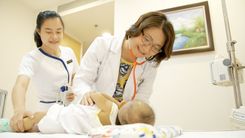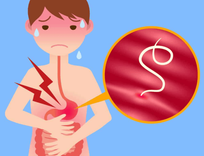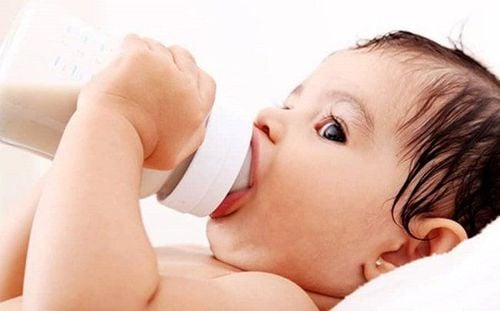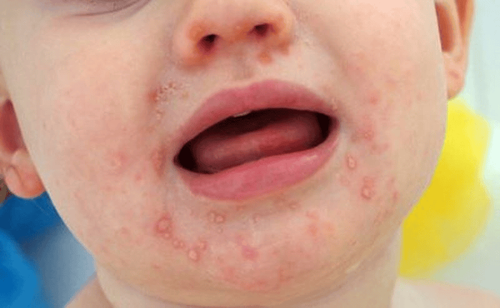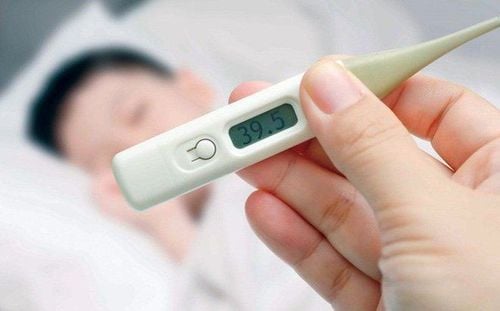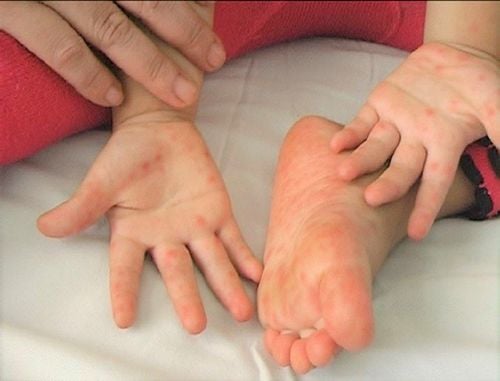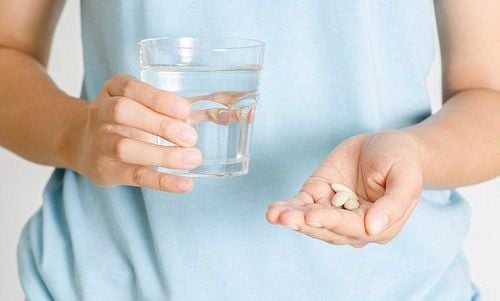A dislocated shoulder is an injury where the upper arm bone pops out of the socket, which is part of the shoulder blade. If you suspect your child has a dislocated shoulder, seek medical attention immediately.
In most cases, children with a dislocated shoulder can regain full shoulder function within a few weeks. However, once a child has had a dislocated shoulder, their joint may become unstable and prone to recurrent dislocations. So, what are the signs to recognize if a child has a dislocated shoulder?
1.How do you recognize if a child has a dislocated shoulder?
The shoulder is the most mobile joint and is most often dislocated in the body. This usually happens in contact sports like football, basketball, wrestling, and hockey. It can also be dislocated from a fall when a child is physically active. The most common type is an anterior shoulder dislocation.
A child's shoulder can be dislocated in various situations, and signs include:
- Noticeable deformity in the shoulder area, such as the shoulder joint being misaligned or visibly out of place, with the head of the shoulder sticking out.
Swelling or bruising around the shoulder joint and upper arm. - Intense pain immediately after the child falls, has an accident, or is injured while playing.
- The child’s shoulder is unable to move the joint, or the child has difficulty moving their arm or shoulder. Attempting to move may cause even more severe pain.
When you press your finger on the shoulder joint, you may feel a hollow or depression in the joint. - Additionally, if the child has a dislocated shoulder, they may also experience numbness, tingling, weakness in the arm, hand, or fingers, or a sensation of tingling in the arm, neck, or muscle spasms in the shoulder, which can intensify the pain.

2.How does a child get a dislocated shoulder?
A dislocated shoulder occurs when the small ball of the upper arm bone (humerus) slides out of the shoulder socket, stretching or tearing the supporting ligaments and surrounding muscles. It can be partially dislocated when part of the humeral head slips out of the socket, or fully dislocated when it completely comes out. The mechanism of injury for shoulder dislocation in children is usually indirect, caused by falls where the child braces with their hand or elbow, with the arm outstretched, extended backward, and rotated outward. Other factors, such as the shoulder joint having a wide range of motion, a large ball and shallow socket, and weak ligaments in the front and lower part of the joint capsule, can contribute to the dislocation during a child’s collision or impact.
Typical examples include when a child slips off a railing and grabs onto the top of the railing with their arm, or when a child is using a swing and is thrown off the seat, or when a child braces with their hand during a fall. While this is not a common injury in children, there are still instances where shoulder dislocations do occur.
3.Should parents try to realign the shoulder joint themselves?
The answer is no. Never attempt to adjust or reposition the bone yourself, as this can easily cause additional damage to the surrounding tissues, making the injury worse and more painful for the child.
If possible, parents should support the child’s arm and shoulder by wrapping a piece of cloth from the neck down to the arm to keep it stable and prevent movement. Then, apply a cold compress using a plastic bag filled with ice and clean water to the shoulder area to reduce swelling and pain. Afterward, take the child to the nearest medical facility for examination and treatment. Do not give the child any food or drink, as they may need surgery or sedation. If parents notice signs of shock, such as pale skin, skin that feels clammy, dilated pupils, staring, or a fast heartbeat, quickly take the child to the nearest healthcare facility for immediate treatment.

4.What will happen at the hospital?
When you arrive at the hospital or medical facility, a doctor will examine the injury, the affected area, any swelling or deformity, and check vital signs such as heart rate and blood pressure. It is important for parents to inform the doctor about the cause of the dislocation and whether the child has had previous dislocations. The doctor will then assess the shoulder and may recommend an X-ray to ensure that the child's bone is not fractured. An MRI may also be performed to evaluate the extent of damage to the surrounding tissues. The doctor may use sedatives to help calm the child, then realign the bone to the correct position and stabilize the arm with a sling, brace, or cast, depending on the injury and the child’s health condition. If the injury is more severe, such as if the bone cannot be repositioned or there is nerve or blood vessel damage, surgery may be necessary for the best treatment.
The doctor may advise parents to help the child rest at home, apply ice, and give pain relievers or anti-inflammatory medications to reduce pain and swelling. Additionally, the doctor may recommend specific exercises to help strengthen the muscles around the injury and promote faster recovery. After 1-2 days, the child should start doing light exercises as instructed by the doctor. Keeping the shoulder immobilized for too long can lead to stiffness in the joint. Once the injury heals and normal shoulder movement resumes, the child should continue with light daily exercises, such as stretching or gently rotating the shoulder, to improve flexibility and prevent future dislocations. The doctor or a physical therapist can help create an appropriate exercise plan.
Parents should also be mindful of the child's lifestyle after a shoulder dislocation. The child should reduce physical activity, as the injury requires time to heal. The child should avoid movements that cause pain, and limit running, jumping, and playing sports that require intense physical exertion or impact on areas of the body.
5.How to prevent a child from dislocating their shoulder?
The first step is to prevent situations that could lead to falls. Use basic safety measures and be aware of potential hazards such as slipping in the bathroom, on rugs, stairs, or in playgrounds. Make sure parents can supervise their child and never leave them alone, even for a short time, as this could lead to falls or accidents. As the child grows and is old enough to participate in sports like soccer, badminton, or volleyball, parents should ensure that the child has proper protective gear suitable for the sport. It is important to note that once a child has dislocated their shoulder, they are more prone to future dislocations. Therefore, parents should ensure that the child only engages in exercises aimed at improving overall strength and health, and take preventive measures to protect the child from unwanted injuries.
Additionally, shoulder dislocations in children can occur in situations like car accidents or sleeping in an awkward position (e.g., lying on one side for extended periods). Parents can also consult with a doctor for advice on the best ways to protect and maintain their child’s health.
The shoulder joint is one of the most vulnerable joints in children. A dislocated shoulder often occurs when children play sports like football, basketball, volleyball, or engage in excessive physical activity. It is important for parents to never attempt to realign the shoulder joint themselves, as this can worsen the injury and even cause permanent damage. Additionally, to prevent a child from dislocating their shoulder, parents should supervise the child during physical activities or guide them on how to wear proper protective gear for certain sports.
The Orthopedic & Sports Medicine Center at Vinmec Times City International General Hospital is a specialized department dedicated to treating injuries and conditions related to the musculoskeletal system and ligaments.
The center has expertise in surgery and treatment for the following conditions:
- Partial or total joint and bone replacement with artificial joints;
- Hip, knee, and elbow joint replacement;
- Reverse shoulder replacement and small joint replacement (fingers);
- Arthroscopic surgery to reconstruct and repair ligament and meniscus injuries;
- Bone cancer, bone tumors, and soft tissue tumors in the musculoskeletal system;
- Specialized rehabilitation in sports medicine;
- Motion analysis to diagnose, monitor, and improve performance for athletes, as well as providing diagnosis and support for patient recovery.
The center applies advanced technologies in treatment, such as 3D imaging and 3D printing for bones, artificial joints, and customized assistive devices, as well as the use of new materials for artificial bones and joints. It also utilizes robotic-assisted surgery for precise operations.
To schedule an appointment at the hospital, please call the HOTLINE number or book directly HERE. Download and schedule your appointment automatically on the MyVinmec app to manage, track your schedule, and make appointments anytime, anywhere directly on the app.
Source: babycenter.com, adventhealth.com

